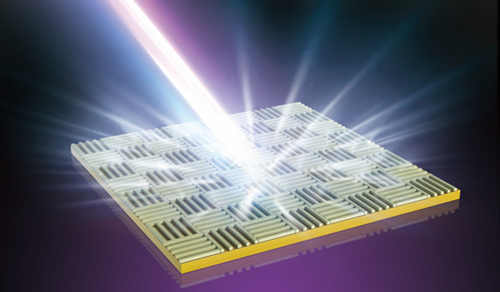UV Interface Nano Lithography (Nanoelectronics - Optical) PhD in Nano - Microelectronics
Researcher and author: Dr. ( Afshin Rashid)
Note: To easily figured interfere with the beneficial aspects of using UV light sources are created. The advantage of this method is simplicity. The problem is creating complex shapes and arrays.
Nanolithography is a branch of nanotechnology that studies and uses the construction of nanometer-scale structures — that is, creating patterns with at least one lateral dimension between the size of a single atom and approximately 100 nanometers. It is used in the construction of advanced semiconductor integrated circuits (nano-circuits) or nano-electromechanical systems (NEMS). Nano-lithography is a broad term used to describe various processes for creating nanoscale patterns in a variety of environments, the most common of which is silicon semiconductor materials. The predominant goal of nanolithography is to shrink electronic devices, which causes more electronic components to shrink into smaller spaces, that is, smaller integrated circuits that lead to smaller devices because they are faster and cheaper to produce because fewer materials are needed. It also increases performance and response time because electrons only have to travel very short distances.
The ability to produce large microstructures and nanostructures on non-planar surfaces is important for many applications such as optics, optoelectronics, nanophotonics, imaging technology, NEMS and microfluids. However, it is very difficult to create large nanostructures on curved or non-planar surfaces using existing modeling methods. In addition, the current types of nanotechnology technologies such as electron beam lithography (ELB), optical lithography, interference lithography (IL), etc., can not meet all the application demands of industrial applications in terms of high resolution, high power, low cost. . , Large area and olgoes on uneven and curved surface. Therefore, new high-volume nanotechnology technology is in dire need of exploitation and development to meet the tremendous needs of emerging markets. Nanoelectronic lithography is currently considered as a promising low-cost, high-power, high-resolution nano-pattern method, especially for the production of small-scale / large-scale nano-patterns and complex 3D structures. The above aspects have also created proportional features due to these salient advantages. The conversion of optical structures in combination with the construction of a large area becomes a more effective method in this field. In particular, nanoelectronic lithography has great potential for setting new standards for the construction of miniature, low-cost, low-weight optics that can be used in many applications.
Conclusion :
To easily figured interfere with the beneficial aspects of using UV light sources are created. The advantage of this method is simplicity. The problem is creating complex shapes and arrays.
Researcher and author: Dr. ( Afshin Rashid)
PhD in Nano-Microelectronics




